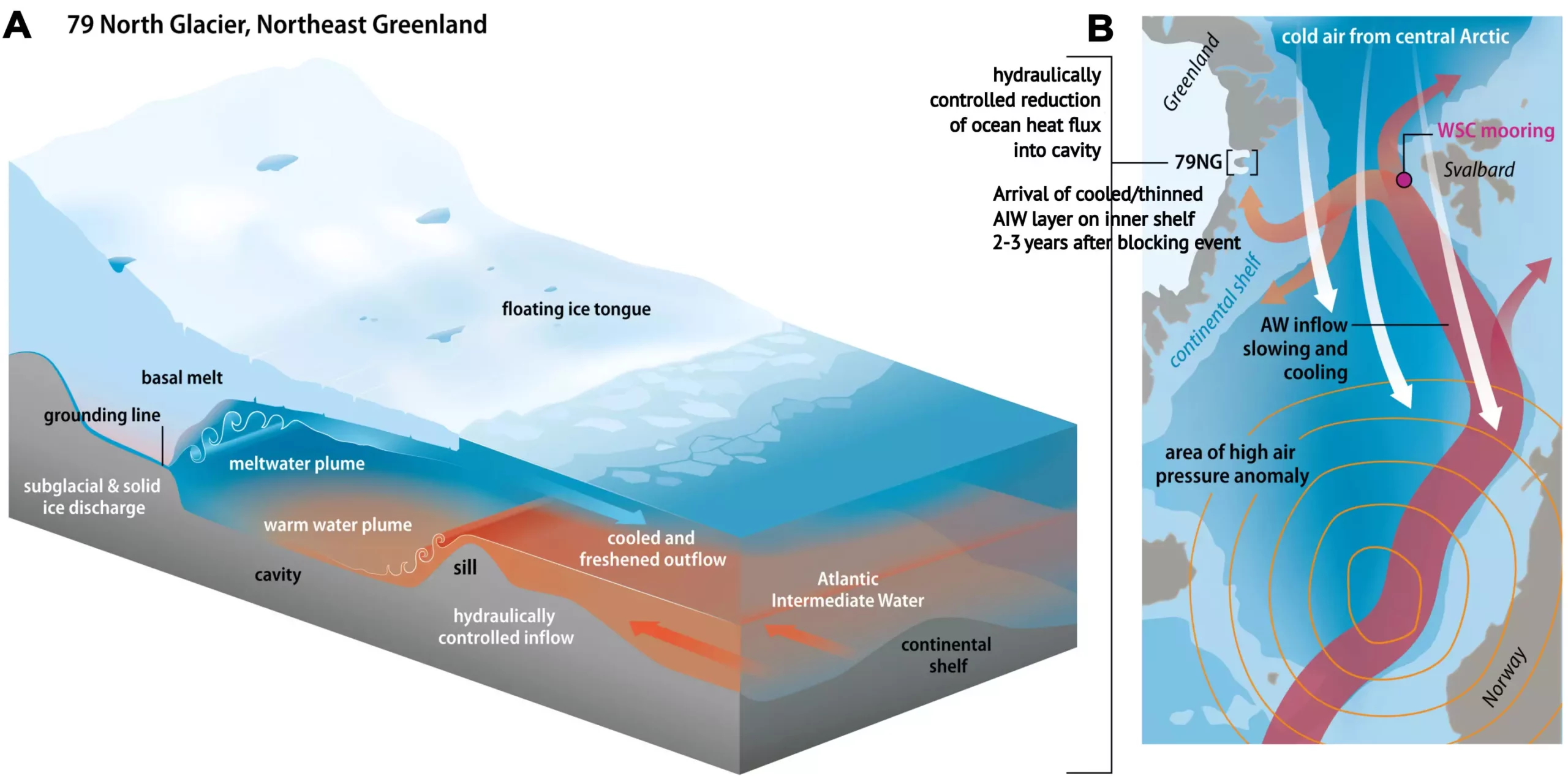In the context of global climate dynamics, glaciers serve as critical indicators of environmental change. The 79° N Glacier in Northeast Greenland, the largest floating glacier tongue in the country, exemplifies the challenges posed by climate change. Historically, this massive ice body has been subjected to the relentless forces of warming oceans and atmospheric shifts. However, recent research from the Alfred Wegener Institute (AWI) reveals a puzzling paradox: during a period of global warming, the waters melting this glacier from below significantly cooled. This article explores the complexities of these findings, the implications for future research, and the broader context of glacier behavior in a changing climate.
The 79° N Glacier, an integral part of the Greenland Ice Sheet and a primary contributor to rising sea levels, operates within a complex system of atmospheric and oceanic interactions. As the climate warms, the glaciers are increasingly at risk of destabilization, resulting in accelerated melting processes. The alarming rate of ice mass loss in Greenland has profound implications—scientists warn that the complete melt of the Northeast Greenland Ice Stream could elevate global sea levels by as much as one meter.
In a groundbreaking study published in the journal Science, researchers at AWI have reported a notable decline in the temperature of the ocean water flowing into the glacier’s underwater cavern between 2018 and 2021. This cooling trend appears to contradict the prevailing ocean warming patterns observed over decades, compelling researchers to delve deeper into the potential causes and consequences of this anomaly.
Dr. Rebecca McPherson, the study’s lead author, indicated that this unexpected cooling suggests a reduced influx of warm oceanic waters under the glacier, leading to a slower melting process during that period. The researchers utilized an oceanographic mooring system to gather extensive data on various parameters, including seawater temperature and flow rates at the glacier’s calving front. Their observations revealed that although the temperature of the Atlantic waters had initially spiked in late 2017, it dropped by 0.65 degrees Celsius by early 2018.
The source of this cooling phenomenon can be traced back to changes in atmospheric circulation patterns affecting the Fram Strait and the Norwegian Sea. The researchers argue that atmospheric blocks—stable high-pressure regions in the atmosphere—diverted prevailing air currents, subsequently impacting ocean temperatures and the flow of warm waters toward the Arctic.
The presence of these atmospheric blocks allowed for an influx of colder Arctic air into the Norwegian Sea, leading to a cooling effect on the Atlantic waters as they traversed towards Greenland. This interplay between atmospheric conditions and oceanic temperatures signifies a complex feedback loop impacting glacier dynamics.
Understanding this relationship is crucial, as it illustrates how localized changes can have global ramifications. Professor Torsten Kanzow, a co-author of the study, emphasizes the relevance of the Atlantic Meridional Overturning Circulation (AMOC), a critical component of global ocean currents. Should the AMOC weaken due to continuous warming, the implications for not only the 79° N Glacier but also the broader climate system could be severe.
Looking ahead, AWI researchers are gearing up for further investigations in the summer of 2025 aboard the research icebreaker Polarstern. The anticipation of rising water temperatures in the Fram Strait instigates concerns regarding increased glacier melting rates. Close observation of these changes is vital for predicting future trends in sea-level rise.
The results of this study also highlight the necessity of refining predictive models concerning the fate of the 79° N Glacier. By correlating short-term atmospheric events with glacier behavior, researchers aim to develop more robust forecasts of future melting rates and their potential impacts on sea level rise.
The findings from the AWI team underscore the intricate balance between climatic factors and glacier stability. The unexpected cooling of the waters beneath the 79° N Glacier introduces an important element to the ongoing discourse on climate change—a reminder that understanding glacier dynamics requires a multidisciplinary approach. As research evolves, it will be essential to continue investigating these complex relationships to refine predictive models for sea-level rise and better prepare for the challenges that lie ahead in the face of climate change. The fate of the glaciers, indeed, mirrors the broader environmental narrative of our time: an ongoing struggle against the tumult of a changing climate.


Leave a Reply